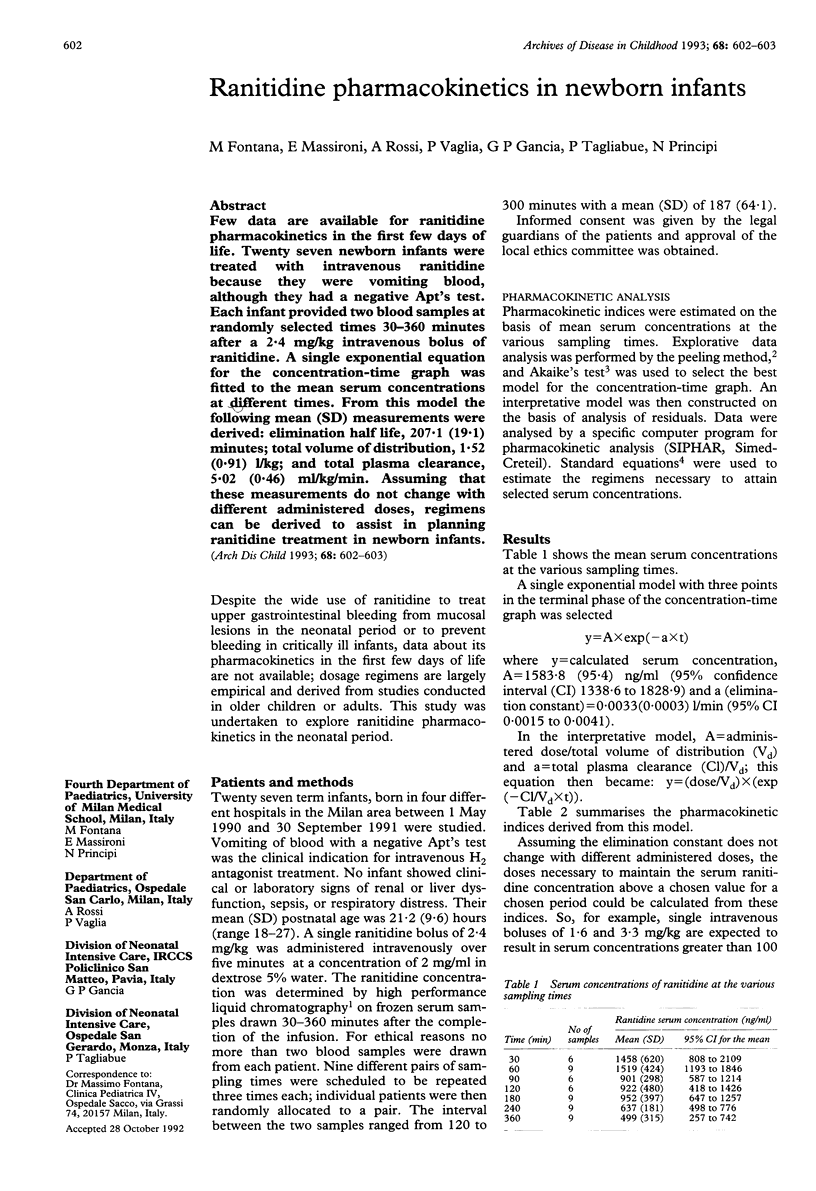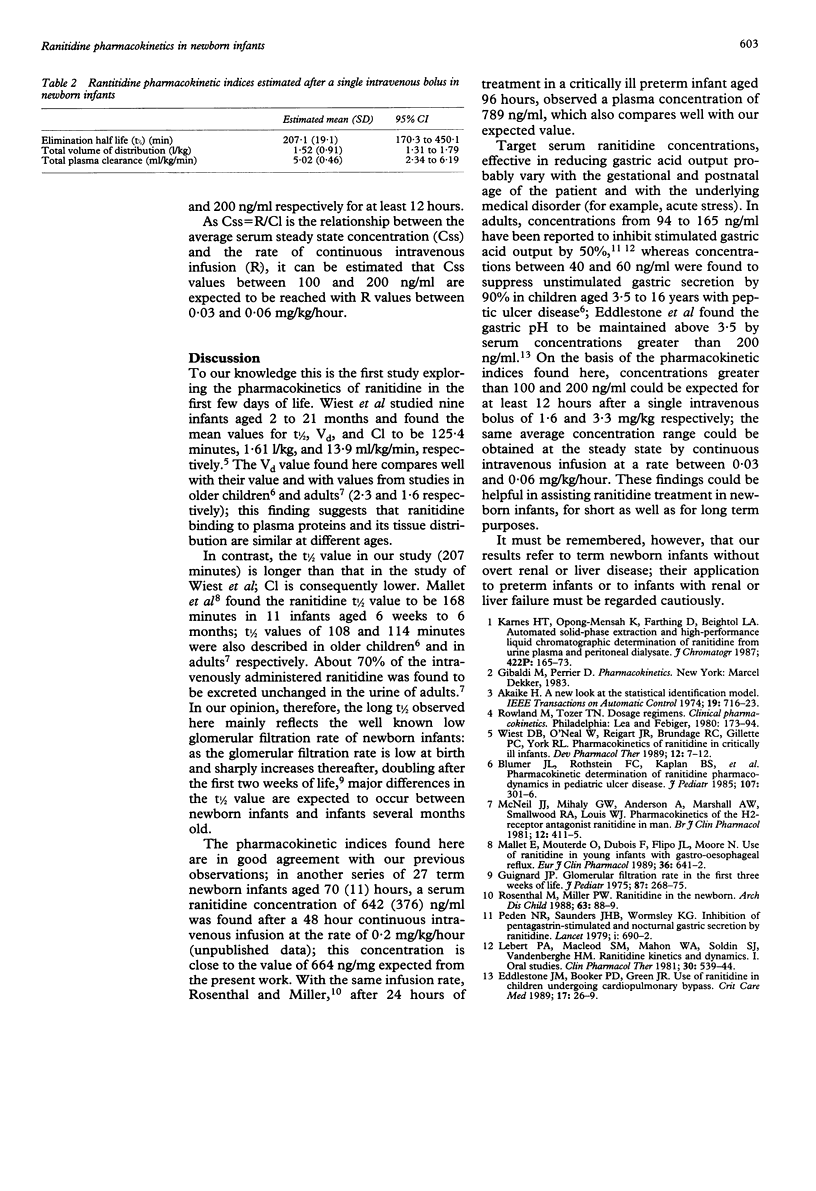Abstract
Few data are available for ranitidine pharmacokinetics in the first few days of life. Twenty seven newborn infants were treated with intravenous ranitidine because they were vomiting blood, although they had a negative Apt's test. Each infant provided two blood samples at randomly selected times 30-360 minutes after a 2.4 mg/kg intravenous bolus of ranitidine. A single exponential equation for the concentration-time graph was fitted to the mean serum concentrations at different times. From this model the following mean (SD) measurements wer derived: elimination half life, 207.1 (19.1) minutes; total volume of distribution, 1.52 (0.91) l/kg; and total plasma clearance, 5.02 (0.46) ml/kg/min. Assuming that these measurements do not change with different administered doses, regimens can be derived to assist in planning ranitidine treatment in newborn infants.
Full text
PDF

Selected References
These references are in PubMed. This may not be the complete list of references from this article.
- Guignard J. P., Torrado A., Da Cunha O., Gautier E. Glomerular filtration rate in the first three weeks of life. J Pediatr. 1975 Aug;87(2):268–272. doi: 10.1016/s0022-3476(75)80600-7. [DOI] [PubMed] [Google Scholar]
- Lebert P. A., MacLeod S. M., Mahon W. A., Soldin S. J., Vandenberghe H. M. Ranitidine kinetics and dynamics. I. Oral dose studies. Clin Pharmacol Ther. 1981 Oct;30(4):539–544. doi: 10.1038/clpt.1981.200. [DOI] [PubMed] [Google Scholar]
- Mallet E., Mouterde O., Dubois F., Flipo J. L., Moore N. Use of ranitidine in young infants with gastro-oesophageal reflux. Eur J Clin Pharmacol. 1989;36(6):641–642. doi: 10.1007/BF00637754. [DOI] [PubMed] [Google Scholar]
- McNeil J. J., Mihaly G. W., Anderson A., Marshall A. W., Smallwood R. A., Louis W. J. Pharmacokinetics of the H2- receptor antagonist ranitidine in man. Br J Clin Pharmacol. 1981 Sep;12(3):411–415. doi: 10.1111/j.1365-2125.1981.tb01236.x. [DOI] [PMC free article] [PubMed] [Google Scholar]
- Peden N. R., Saunders J. H., Wormsley K. G. Inhibition of pentagastrin-stimulated and nocturnal gastric secretion by ranitidine. A new H2-receptor antagonist. Lancet. 1979 Mar 31;1(8118):690–692. doi: 10.1016/s0140-6736(79)91146-2. [DOI] [PubMed] [Google Scholar]
- Wiest D. B., O'Neal W., Reigart J. R., Brundage R. C., Gillette P. C., Yost R. L. Pharmacokinetics of ranitidine in critically ill infants. Dev Pharmacol Ther. 1989;12(1):7–12. [PubMed] [Google Scholar]


